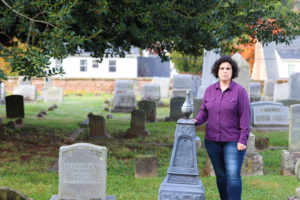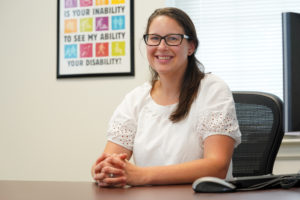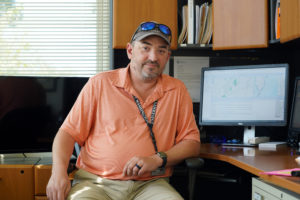While the month winds down and we’re all consumed with information about COVID-19, March gives us something to celebrate – Arts Education Month, and a teacher’s dedication to students.
Carole Garmon’s career – and art – is best described as one and the same.

Professor of Art Carole Garmon
The longtime UMW professor of art views the world through a visual lens, believing the creative process fuels the imagination. “We have to allow ourselves to imagine things beyond the tangible. Art is beautiful and sometimes challenging,” she said. “But it’s always a reflection on the self.”
A Texas native, Garmon was reflecting on her own future when she moved to Virginia to earn an MFA in sculpture at VCU. She came to work at Mary Washington in 1998, hired to update the sculpture area in Melchers Hall. Presented with a blank canvas, she was charged with creating – almost from scratch – a studio art program, which she says champions art as a career and a lifestyle, not “merely a lifelong appreciation.”
Her stance is the perfect portrait for March, Arts Education Month.
Garmon’s love of teaching is as extraordinary as her passion for artmaking. “Curiosity and wonder” are what drive her. Teaching allows her to constantly channel the creative process, even when she’s supposed to be sleeping.
“I’ll wake up in the middle of the night and brainstorm possible solutions for students,” she said.
Garmon is one of only two Americans chosen to participate in the international exhibition, Inspired By Rembrandt, commemorating the celebrated artist’s 400th birthday. Her work has been shown in D.C., San Antonio, New York, Peru and Berlin, with an upcoming exhibit in New Orleans.
She loves seeing former students’ art, too, around the world. She’s never surprised but always amazed.
“Some students say I act like they can do anything,” Garmon said. “What’s the alternative? Nothing?”
Q: What’s the most rewarding part of your job?
A: I work with talented students and faculty who recognize the importance of art and commit to a life that some view as “not as relevant” as traditional life goals.
Q: Most challenging?
A: Getting students comfortable with risk-taking, even failure. We learn a lot through these experiences; I’d say more so than from our successes. Think masterpiece, risk failure.
Q: Your favorite work of art?
A: Donatello’s sculpture of David. He’s far from the traditional heroic approach. When I saw him in an art history class, I couldn’t take my eyes off him. He blurs gender; the epitome of ambiguity. As photographer Sally Mann says, “If it doesn’t have ambiguity, why bother?”
Q: How do you teach art virtually?
A: For many, it’s a first. My classes voted on how to proceed. We upload and comment on images through Canvas. My assignments provide openness, empowering students to push creativity while working away from the studio. They’re resilient and eager to keep learning. They’ve blown me away. A student who finally made it back to California just told me she had to bend her artwork to get it on the plane. We do what we have to do.
Q: A mantra you live by?
A: “Never ask permission to take up space” and “If you’re asking the question, you already know the answer.”
Garmon asked to include a special addendum for this uncertain time:
“If you will stay close to nature, to its simplicity, to the small things hardly noticeable, those things can unexpectedly become great and immeasurable.” ― Rainer Maria Rilke, Letters to a Young Poet



